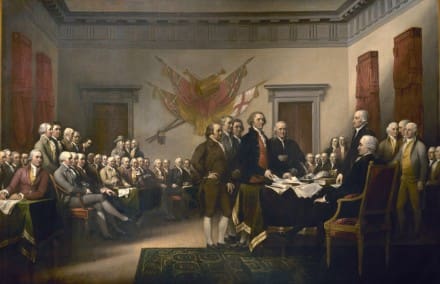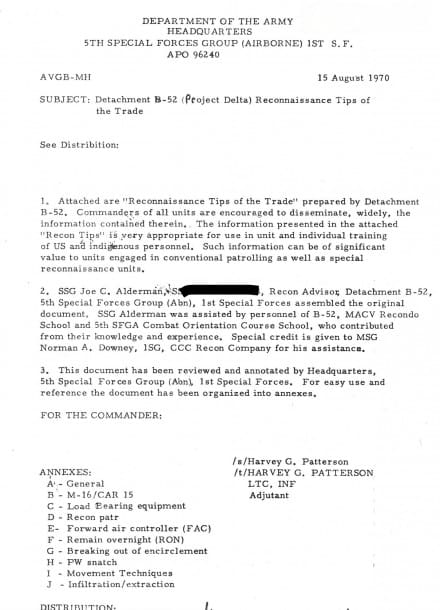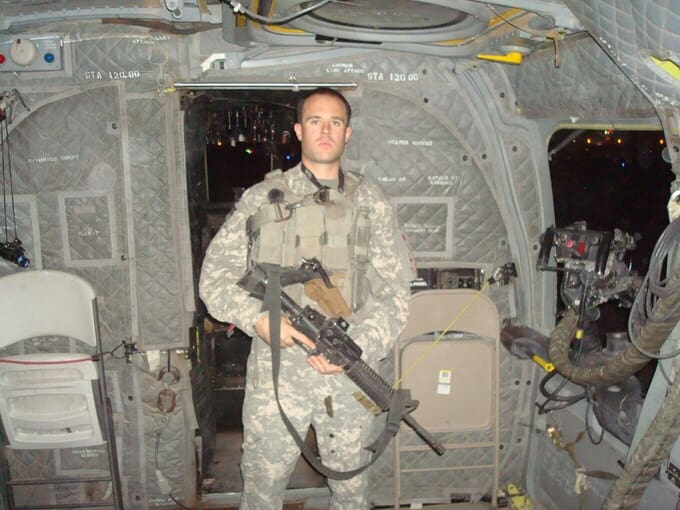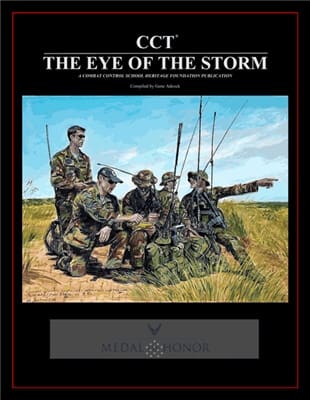For decades, Infantry Magazine was the professional journal of the grunt. Printed by the Infantry Center, it facilitated outreach to members of the branch, informed on modernization efforts and served as a platform for professional writing. This ad promoting the publication, was printed during the early 70s heyday of men’s pulp magazines, with their lurid covers, promising to satisfy an appetite for life.
I love the combat ace look, with ascot, starched OG-107 fatigues, aviator shades and leather gloves. The only thing missing is a Vietnamese Ranger badge or jump wings, and direct embroidery.
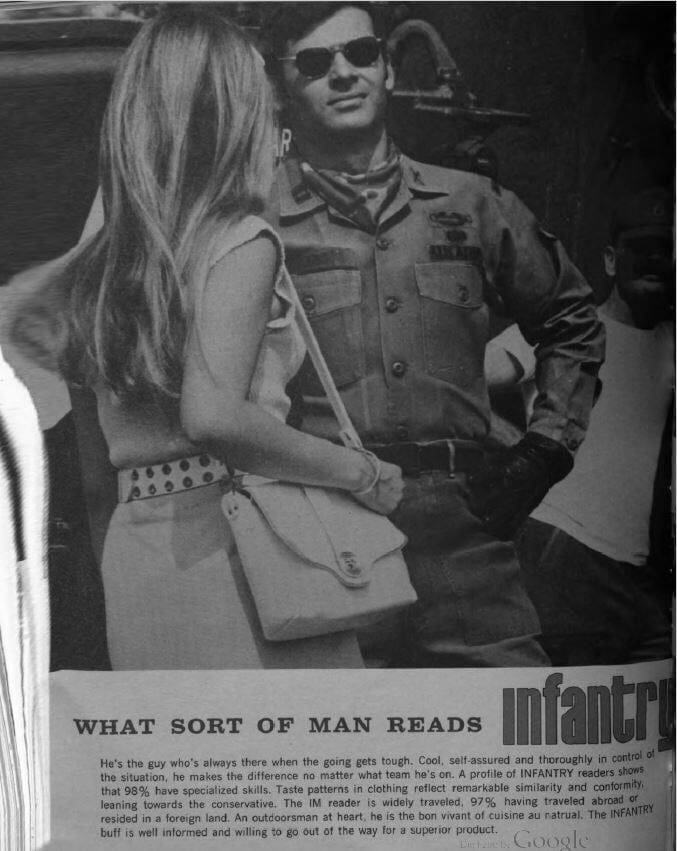
The text reads:
What sort of man reads Infantry?
He’s the guy who’s always there when the going gets tough. Cool, self-assured and thoroughly in control of the situation, he makes the difference no matter what team he’s on. A profile of INFANTRY readers shows that 98% have specialized skills. Taste patterns in clothing reflect remarkable similarity and conformity, leaning towards the conservative. The IM reader is widely traveled, 97% having traveled abroad or resides in a foreign land. An outdoorsman at heart, he is the bon vivant of cuisine au natrual (sic). The INFANTRY buff is well informed and willing to go out of the way for a superior product.


